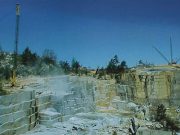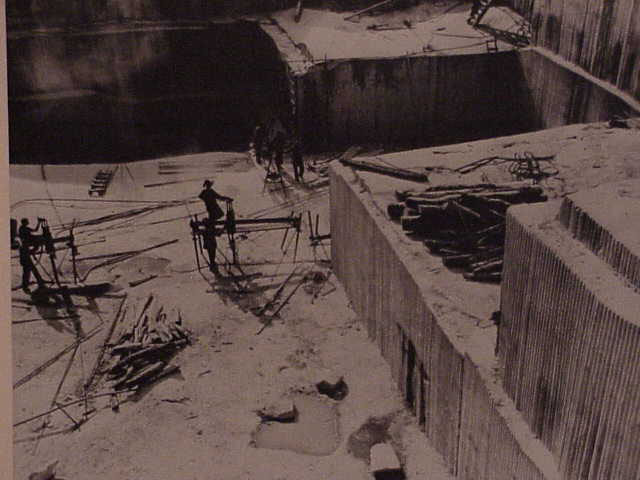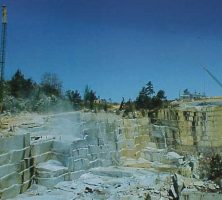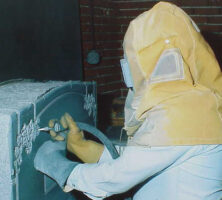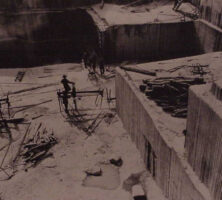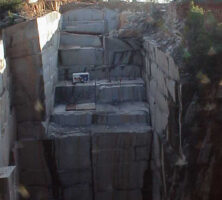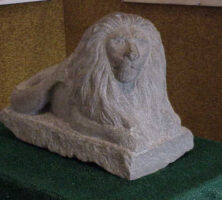Tucked away in the northeastern Georgia Piedmont between the Savannah and Broad rivers lies the city of Elberton, also known as the granite capital of the world. Currently, more than 150 sheds and manufacturing plants turn rough blocks of granite extracted from 45 area quarries into finished memorials, markers, and mausoleums. These granite products are subsequently shipped to customers all over the world. At least one monument or marker made from Elberton’s granite has been placed in all fifty states; the granite is also found in several foreign countries. In recent years Elberton’s stone industry has produced an average of 250,000 granite markers and monuments annually. In all, a total of 280 separate companies operated businesses in granite production or related services in Elberton in 2003.
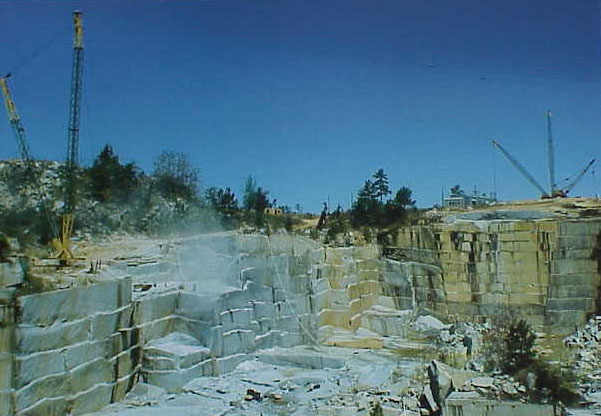
Courtesy of the Elberton Granite Association
Elbert County sits upon a subterranean bed of granite in the Piedmont geologic province, identified at the turn of the twentieth century as the Lexington-Oglesby Blue Granite Belt, that measures about fifteen miles wide and twenty-five miles long and stretches into nearby Oglethorpe and Madison counties. In the county’s early history, the granite was seen more as a nuisance rather than as an industry, especially for residents primarily engaged in agricultural activities. Early uses of the granite involved the creation of rough grave markers and foundational and chimney stone for homesteads.
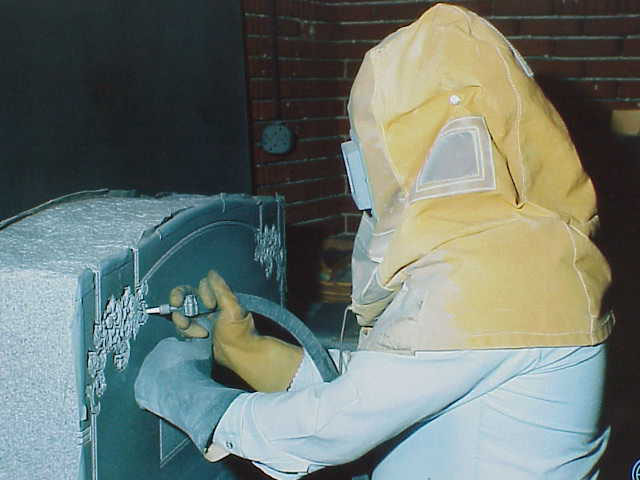
Courtesy of the Elberton Granite Association
After the Civil War (1861-65), however, new possibilities for Elberton’s granite began to emerge. In 1882, Elberton’s first quarry was opened near the Broad River to get constructional stone for use by one of the local railroads. By 1885 a second quarry, located about four miles north of the town, was also opened. As in earlier times, quarried granite, in addition to being used for local railroads, was a preferred material in both home construction and landscaping.
In 1889 the Swift and Wilcox quarry, owned by granite pioneers Thomas M. Swift and W. M. Wilcox and located just outside the city limits, began operation. At the time Swift and Wilcox employed almost thirty workers at the site, including seven immigrants—the first of many foreigners who would later come to work in Elberton’s granite industry. Later that year Swift and Wilcox produced Elberton’s first granite monument, which was put on display at Atlanta’s Piedmont Exhibition and won praise and admiration from visitors. On July 6, 1889, the Elberton Star, the local newspaper, christened the town the “Granite City.”
During the 1890s Elberton’s potential as a producer of granite solidified as more quarries in the city and county were opened. The industry’s growth was further enhanced when the Georgia, Carolina and Northern Railroad (later known as the Seaboard Air Line) completed a portion of its line through the county in 1891. A state-sponsored survey of Elberton’s granite deposits later in the decade verified through chemical analysis that the county’s stone was of a superior quality.
In 1898 Arthur Beter, an Italian sculptor, executed the first statue carved out of Elberton granite. The small building constructed to house the statue during its completion became the town’s first granite shed. The statue, a Confederate soldier mounted on a granite pedestal in the town’s square, quickly became an eyesore to citizens because of its “decidedly northern dress” and shocking appearance. One resident may have put it best when he said that the statue was a “strange monster, . . . a cross between a Pennsylvania Dutchman and a hippopotamus.” It was this comment that earned the ignoble statue the nickname “Dutchy.” Dutchy’s end came during the night of August 14, 1900, when a group of unknown persons tied a lasso around the statue and hauled it to the ground. A few days later it was buried where it had fallen, unceremoniously. Today the statue is on view at the Elberton Granite Museum.
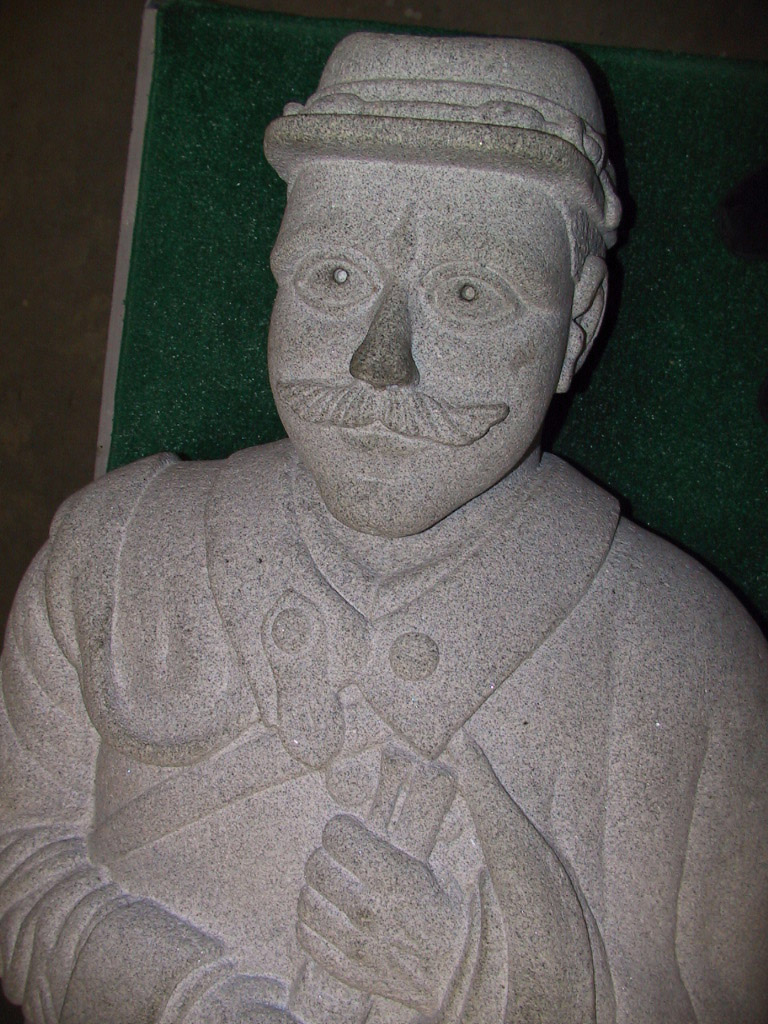
Photograph by Melinda S. Mullikin, New Georgia Encyclopedia
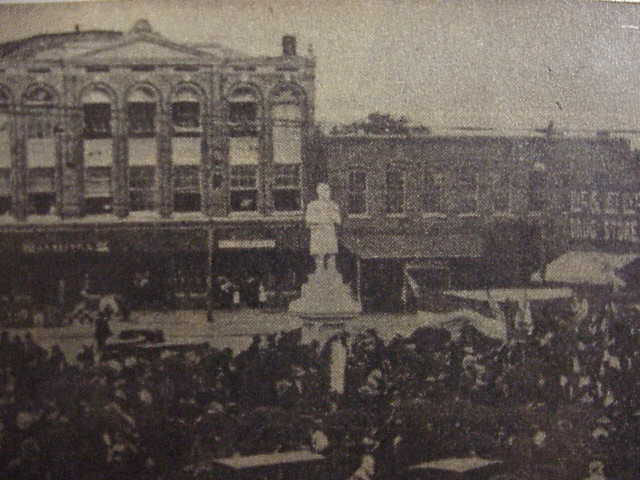
Courtesy of the Elberton Granite Museum and Exhibit
Prospects for Elberton’s New South granite industry looked bright at the turn of the century. One of the industry’s most significant firms to emerge early in the twentieth century was the Long-Blue Granite Company, owned and operated by another granite pioneer, Dr. Nathaniel G. Long. In 1904 Long exhibited some of his blue granite at the St. Louis World’s Fair, where it won a gold medal for excellence and quality. Italian immigrants were also beginning to filter into the county. Prior to World War I (1917-18), the most prominent sculptor of both statues and monuments was Peter Bertoni, an Italian immigrant.
During the 1920s immigration from Italy and the northern United States boomed, as skilled laborers came to Elbert County to pursue a livelihood in the granite business. Among the many new arrivals were Charles C. Comolli, founder and owner of the Georgia Granite Corporation, and Richard Cecchini, a highly skilled stone sculpturer. Another newcomer to Elberton at this time was B. F. Coggins, an Atlanta businessman, who began a conglomerate of granite businesses all united under an umbrella organization known as the Coggins Granite Industries. During the 1930s as the country suffered through the Great Depression, Comolli, Coggins, and other granite entrepreneurs enjoyed prosperous times, and the industry flourished with the creation of new sheds and the opening of additional quarries.
After World War II (1941-45) Elberton’s granite industry entered its most prosperous era, lending credence to its claim that it was the granite capital of the world. In 1951 the Elberton Granite Association was founded; it has since grown to become the largest association of granite quarriers and manufacturers in the United States. To boost Elberton’s granite interests, the Elberton Granite Association soon began issuing a quarterly magazine, still in publication, known as the Elberton Graniteer, which highlights noteworthy accomplishments and activities related to the town’s industry.
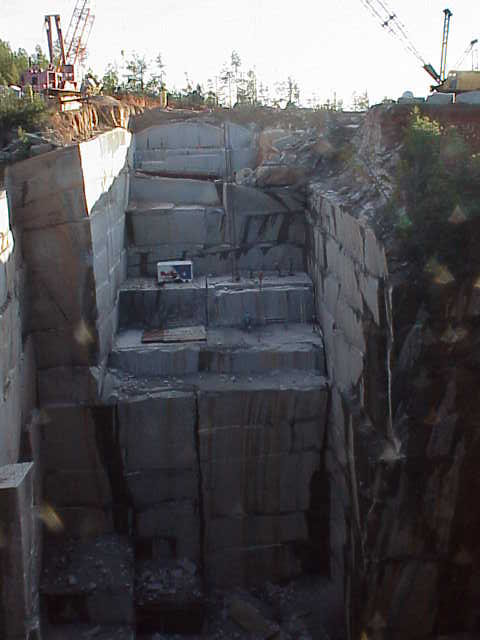
Photograph by Clay Ouzts
That industry continues to expand, and the availability of the stone as an economic resource has not noticeably declined since the opening of the first quarries late in the nineteenth century. From humble beginnings, Elberton’s granite industry not only has grown to achieve worldwide recognition but also has emerged as one of the most important extractive industries in the state. The Elberton Granite Museum, which houses historical photographs, objects, tools, and monuments related to Elberton’s granite history, is free of charge to the public.


